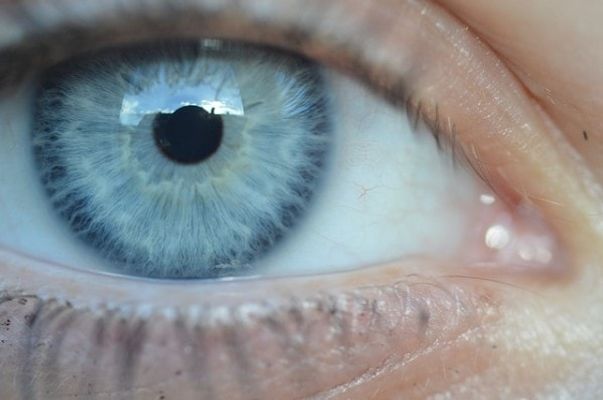7.2.1
Crimes in Atonement
Crime in Atonement: The Sexual Assault on Lola
Crime in Atonement: The Sexual Assault on Lola
The plot of Atonement is structured around two crimes which take place around the mid-point of the novel, towards the end of Part One: the sexual assault on Lola and Briony’s false accusation against Robbie.


Lead up & consequences of crimes
Lead up & consequences of crimes
- The novel examines the lead-up to both crimes, recounting the events in the Tallis household that day from a range of different perspectives.
- It then explores the consequences of both crimes in the years which follow.


Paul Marshall's crime
Paul Marshall's crime
- Paul Marshall’s crime is heinous: the rape of a 15-year-old girl.
- However, the precise details of the crime are ambiguous as McEwan never provides a definitive account of what precisely happened by the island temple that night.


Briony's perspective on the assault
Briony's perspective on the assault
- We witness the scene from Briony’s perspective, only too aware of how she has misinterpreted other key scenes that same day (i.e. the scene by the fountain, and Cecilia and Robbie making love in the library).
- Briony later admits that she is an “unreliable witness”.


Ambiguity: darkness
Ambiguity: darkness
- The darkness that night is continually referenced in the narrative. It means that Briony can make out little more than “a figure” who quickly fades “into the darker background of the trees” (p164).
- This ambiguity over who the attacker is creates the suspense which is typical of crime fiction, inviting the reader to question Briony’s assertion that she had seen Robbie and to speculate on the identity of other possible assailants.


Uncertainty: island temple location
Uncertainty: island temple location
- Likewise, there is uncertainty over how Lola and Marshall came to be together by the island temple that night. At their wedding almost 5 years later, Briony describes the 15-year-old Lola as someone “who longed to throw off the last restraints of childhood” (p324).
- You could argue that this suggests that Lola looked to Marshall for validation and may have even arranged to meet him at the spot where Briony finds them. While this would not excuse Marshall’s actions, it may perhaps explain why Lola is prepared to cover for him.
Crimes in Atonement - Briony's Crimes & War
Crimes in Atonement - Briony's Crimes & War
Briony’s crime is clear – she falsely accuses Robbie of being Lola’s assailant. The war in northern France dominates Parts Two and Three of the novel and can be considered as another crime.


Reasons for Briony's story
Reasons for Briony's story
- The reasons behind Briony's decision to stand by her story are never fully resolved. Given Briony’s willingness to reshape reality in her fiction, readers may be suspicious of the explanation that she offers.


War: crime against humanity
War: crime against humanity
- The war could be considered a crime against humanity.
- Robbie reflects on Europe being “a dead civilisation” (p217) and, as readers, we encounter a whole supporting cast of victims of the war in these two sections of the novel.
1Introduction to Atonement
1.1Introduction & Background to Atonement
1.2Focus of Your Exam: Crime Texts
2Chapter Summaries & Analysis: Part One
2.6Chapter 6
2.10Chapter 10
2.11Chapter 11
2.12Chapter 12
2.13Chapter 13
2.14Chapter 14
3Chapter Summaries & Analysis: Part Two
3.1Pages 191-201: To the Farmhouse
3.2Pages 202-213: The Night in the Barn
3.3Pages 214-226: The Attack
3.4Pages 226-234: Robbie's Reflections
3.5Pages 234-246: To the Bridge over the Canal
3.6Pages 246-254: Arrival at Dunkirk
3.7Pages 254-265: To the Cellar
4Chapter Summaries & Analysis: Part Three
4.1Pages 269-277: London, 1940
4.2Pages 277-286: Briony as Writer
4.3Pages 287-315: Victims of War
4.4Pages 315-327: Lola & Paul Marshall’s Wedding
4.5Pages 328-349: The Visit
5Chapter Summaries & Analysis: Part Four
5.1Epilogue: London, 1999 - Pages 353-371
6Key Character Profiles
6.1Briony Tallis
6.2Robbie Turner
6.3Cecilia Tallis
6.5Paul Marshall
6.6Emily Tallis
7Key Themes
7.1Introduction to Crime Texts
7.2Crimes in Atonement
7.3Criminals in Atonement
7.4Victims in Atonement
7.5Detection in Atonement
7.6Settings in Atonement
7.7Guilt & Punishment in Atonement
8Writing Techniques
9Context
9.1Historical Context
9.2Social Context
9.3Literary Context
10Critical Debates
10.1Marxist Literary Criticism
Jump to other topics
1Introduction to Atonement
1.1Introduction & Background to Atonement
1.2Focus of Your Exam: Crime Texts
2Chapter Summaries & Analysis: Part One
2.6Chapter 6
2.10Chapter 10
2.11Chapter 11
2.12Chapter 12
2.13Chapter 13
2.14Chapter 14
3Chapter Summaries & Analysis: Part Two
3.1Pages 191-201: To the Farmhouse
3.2Pages 202-213: The Night in the Barn
3.3Pages 214-226: The Attack
3.4Pages 226-234: Robbie's Reflections
3.5Pages 234-246: To the Bridge over the Canal
3.6Pages 246-254: Arrival at Dunkirk
3.7Pages 254-265: To the Cellar
4Chapter Summaries & Analysis: Part Three
4.1Pages 269-277: London, 1940
4.2Pages 277-286: Briony as Writer
4.3Pages 287-315: Victims of War
4.4Pages 315-327: Lola & Paul Marshall’s Wedding
4.5Pages 328-349: The Visit
5Chapter Summaries & Analysis: Part Four
5.1Epilogue: London, 1999 - Pages 353-371
6Key Character Profiles
6.1Briony Tallis
6.2Robbie Turner
6.3Cecilia Tallis
6.5Paul Marshall
6.6Emily Tallis
7Key Themes
7.1Introduction to Crime Texts
7.2Crimes in Atonement
7.3Criminals in Atonement
7.4Victims in Atonement
7.5Detection in Atonement
7.6Settings in Atonement
7.7Guilt & Punishment in Atonement
8Writing Techniques
9Context
9.1Historical Context
9.2Social Context
9.3Literary Context
10Critical Debates
10.1Marxist Literary Criticism
Unlock your full potential with Seneca Premium
Unlimited access to 10,000+ open-ended exam questions
Mini-mock exams based on your study history
Unlock 800+ premium courses & e-books
